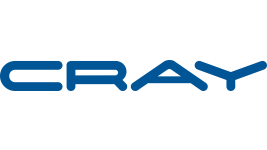The famous quote by Thomas Edison applies perfectly to the new computer at the NERSC (Berkeley) bearing his name. Although the highly energy-efficient machine has a “modest” theoretical peak computing capacity of 2.4 Pflops, it was designed not only to perform large-scale simulations and modeling, but also and predominantly to process the enormous datastream they generate. “DoE sites are inundated with data that researchers cannot adequately process or analyze,” explains Sudip Dosanijh, Director of the NESRC Division. “That’s why Edison was optimized for these two types of computing, which require rapid management of data movements.”
Indeed, Edison, a Cray XC30, was developed with ultra fast interconnectivity, a wide memory bandwidth, a lot of memory per node, and very quick access to the file system and disk drives. In fact, it is the successor to a Cray XE6, which had become somewhat obsolete given the specificities of these tasks. As it does not include accelerators, no code needs to be rewritten, which makes the machine immediately available for simulations, a time saver clearly appreciated by the lucky scientists who will work with it.
In addition to this computational capability and immediate availability, Edison incorporates an advanced “free cooling” (ambient air cooling) technology also developed by Cray. The principle of this system, free of mechanical workings, is based on air flow between cabinets rather than through the cabinet from the door to the back. Concretely, each cabinet contains a heat sink that cools the air before it moves on to the next cabinet. According to Cray, the machine achieves a PUE of approximately 1.1, a figure that is indeed easier to reach with a passive approach.
In figures, Edison features 2.57 Pflops of peak power, 357 TB of aggregate memory, 5,576 nodes dispatched in 30 cabinets, 133,824 Intel Ivy-Bridge processor cores (12 cores per compute CPU), 7.56 PB of disk storage, 462 TB/s of bandwidth for global memory, 163 GB/s of I/O bandwidth, and 11 TB/s of bidirectional network bandwidth.
© HPC Today 2024 - All rights reserved.
Thank you for reading HPC Today.
































